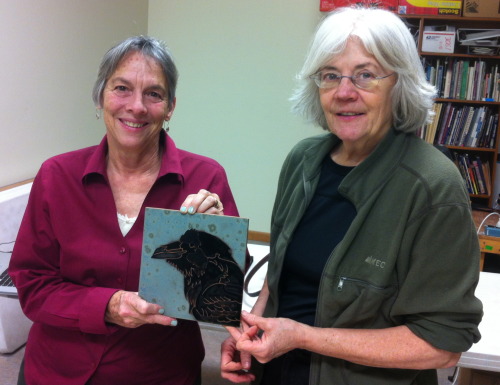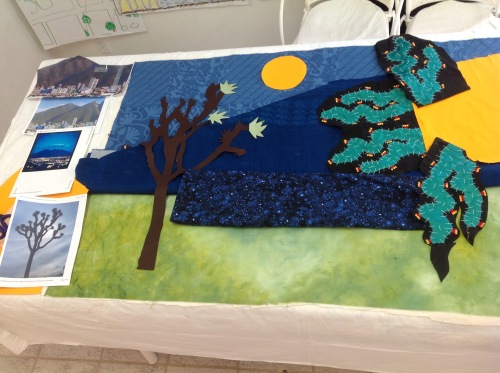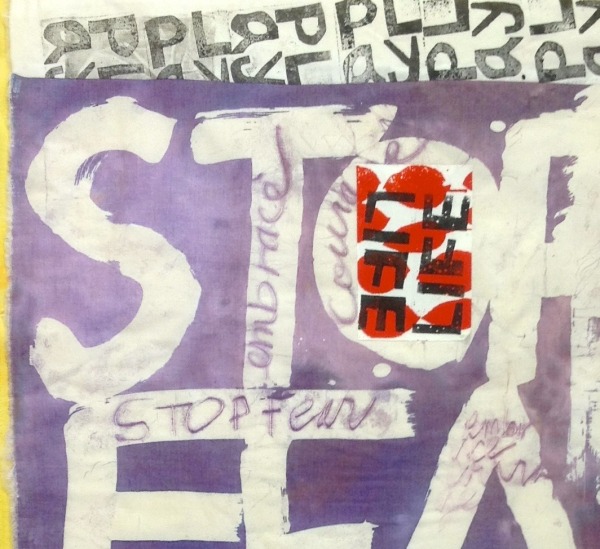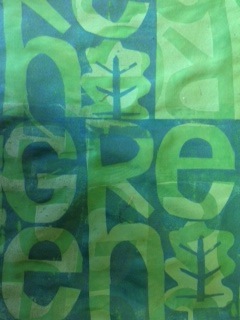Coming up at Southwest School of Art
 Thursday, August 9, 2012 at 09:06AM
Thursday, August 9, 2012 at 09:06AM 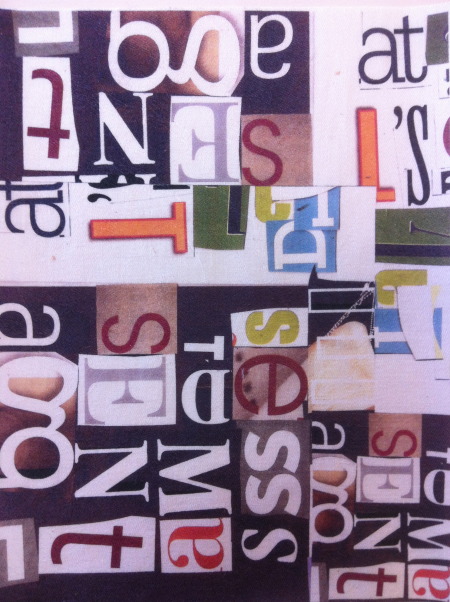
Dates: Mon, 10/1/2012 - 11/19/2012 | Time: 1:00 PM - 4:00 PM

Artist, maker, teacher, author, head cook and bottlewasher.
Sign up here for monthly newsletters from me!
The art I make is the result of a life-long love of pattern, texture and color. How I teach is a skill honed by experience (I started teaching creative arts to younger kids when I was 12). After earning a B.A. in Studio Arts from Trinity University, I helped lead an internationally recognized educational foundation, designed curriculum exhibits for schools and other institutions, wrote and edited for a major daily newspaper, opened the San Antonio Children's Museum and then, a dozen years ago, took the scary but essential (for me) leap to become a fulltime artist and art teacher.
This weblog is about the maker's life. The teacher's path. The stitching and dyeing and printing of the craft of art cloth and art quilt. The stumbling around and the soaring, the way the words and the pictures come together. Poetry on the page and in the piecing of bright scraps together. The inner work and the outer journeys to and from. Practicalities and flights of fancy and fearful grandeur, trivial pursuits and tactile amusements. Expect new postings two or three times a week, unless you hear otherwise.
To reach me, leave a comment after a post, OR email me at susiemonday@gmail.com
To receive a notice of new posts in your email, scroll down this column to the end of the page and subscribe via FEEDBLITZ or add this blog to your own subscription service. You can search the blog with any phrase or word, by typing it into the seach window below:
 Thursday, August 9, 2012 at 09:06AM
Thursday, August 9, 2012 at 09:06AM 
 Saturday, July 28, 2012 at 09:18AM
Saturday, July 28, 2012 at 09:18AM 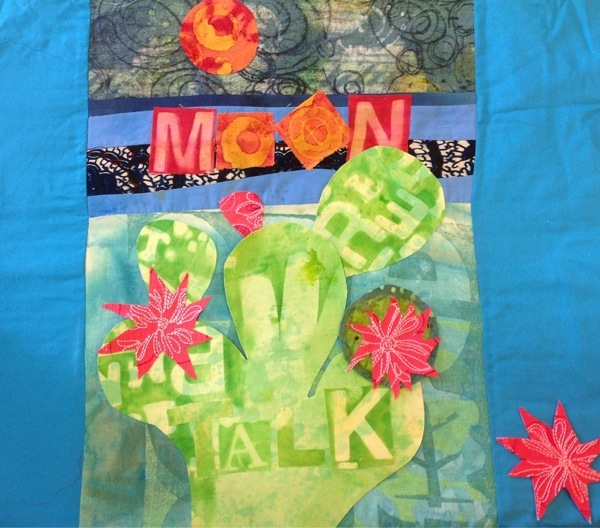
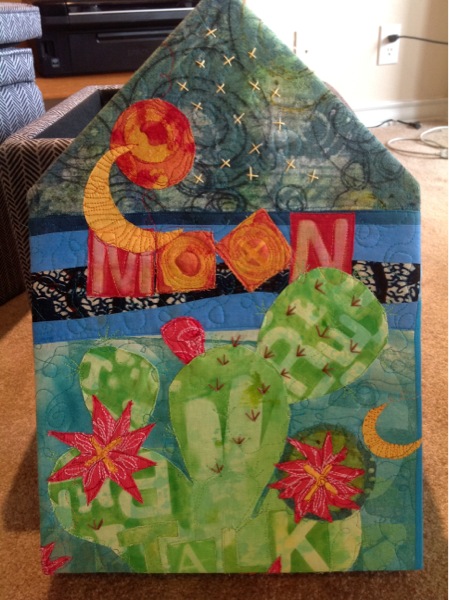
A group of twenty fiber artists have an exhibition opening next week in New Braunfels, Texas, each with 3 to 5 pieces of work initially on display. The reception is set for Friday, August 5 from 2 to 5. Hope to see you at the new Braunfels Art League Gallery, downtown, for the festivities.
The first photo is a small art quilt for the exhibition, in progress; the second, a bit further along!
 Friday, June 29, 2012 at 11:10AM
Friday, June 29, 2012 at 11:10AM 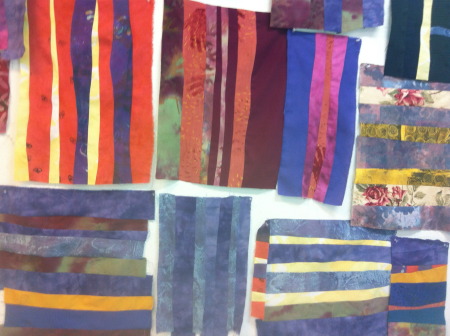
Here are the next two summer classes that you might be interested in. Both are at the Southwest School of Art in San Antonio, and both are perfect for teachers and/or parents interested in helping kids be more creative -- the weekend course will focus on classroom fiber arts activities, including collaborative and individual projects. The parent's class will give anyone who works with kids the vocabulary of "The Missing Alphabet." a powerful tool to help kids face the future we can't predict.
|
|
 Saturday, June 16, 2012 at 12:44PM
Saturday, June 16, 2012 at 12:44PM 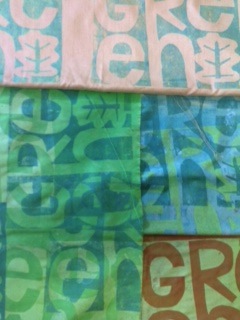 This blog post is intended as a bonus for those enrolled in my More Text on Textiles online course that started on Joggles today.
This blog post is intended as a bonus for those enrolled in my More Text on Textiles online course that started on Joggles today.
Now, it's not too late to join in the fun, so if you are interested in this 4-week, PDF based course (with an online forum during the next 6 weeks), head on over to this link for enrollment info --http://www.joggles.com/store/catalog/product_info.php?cPath=75_1235&products_id=24165
It's an affordable way to get your feet wet with putting words, quotations, pithy comments and other thoughts (yours and others) on your art quilts, art cloth, wearable art or mixed media pieces.
Using letter forms for screenprinting stencils is another way to use your cut letters. P.S. This post assumes you have a basic knowlege of screenprinting. If not, go to this site to see a demo at http://www.youtube.com/watch?v=wogKeYH2wEE. This is a demo that takes you through the entire process, making your own screen. You can purchase them ready-made at many art supply stores. This demo shows all kinds of stencils, and you will be using your cut letters as the stencil. YOU don't need a clamped frame, I just move my small screen over the fabric.
Because these letters will be used as a one time stencil, then thrown away, I usually just use old newspaper or sheets of newsprint, or recycled copy paper. Newspaper is really great because it is really thin and adheres to the screen and wet ink really well.
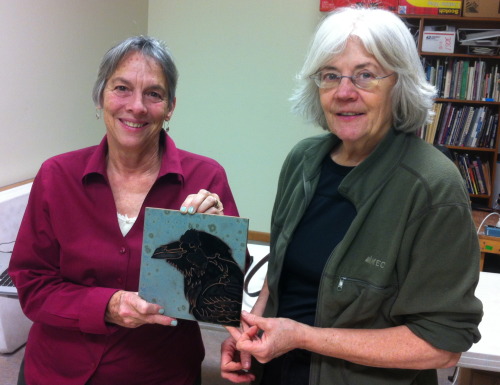
Any thin flat paper will work, but if you want a reusable stencil, cut your letters with contact paper (backing side up, the sticky side goes against the back of the screen).
You can use any clean silkscreen for your tool. Occasionally I even use one with defects or blocked areas, for a distressed kind of print.
Free-hand cut your word or words from your choice of paper (instructions are in the first lesson of More Text on Textiles). Then use small folds of masking tape (one or two per letter only), and tape your letters on the back (bottom) of the screen. Your words should read correctly through the screen unless you are intentionally reversing them. This is a great time to teach yourself to cut serif letters or letters that enlarge some iconic type (like those used by Corita Kent in her work).
Screenprint onto ironed flat fabric with thickened dye (see the Dharma catalog for easy instructions and supplies), textile screen printing ink, or other inks. Use a padded surface under your fabric.
Use your word as a repeat, or as a one-time print. When finished wipe down the screen, remove the letters and wash. Let textile ink prints dry, then iron to set. Thickened dye prints need to be batched, as with any dye painted fabrics.
